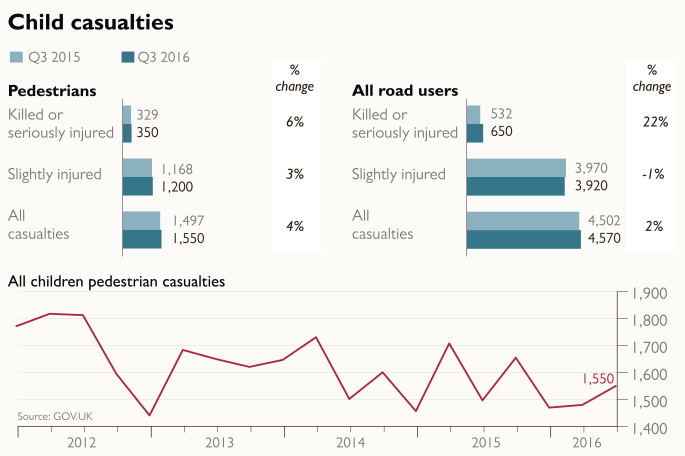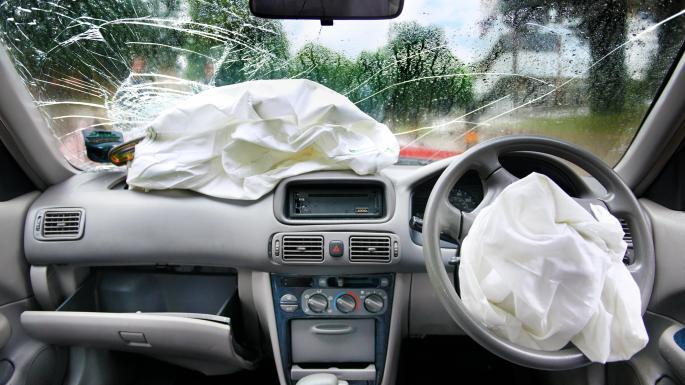The number of children killed or seriously injured on Britain’s roads has jumped by more than a fifth in the past year, and experts say that youngsters are so preoccupied with their phones they are risking their lives when they cross the road.
A total of 650 children were killed or severely injured between July and September last year, 118 more than in the same three months in 2015, according to the Department for Transport. Child pedestrian casualties rose by 6 per cent in the same period to 350.
Edmund King, president of the AA, said there were fears that older children were becoming increasingly careless crossing the road because they were using their phones. “Smombies”, or smartphone zombies, needed to be seriously addressed in the advice to children on road safety, he said.

Pete Williams, of the RAC, said that the figures sent “the message that we cannot afford to be complacent on child road safety”.
He added: “We know that the most vulnerable age group of pedestrians is 11 and 12-year-olds making their own way to secondary school, often for the first time. They face countless distractions, from talking to friends and now the added temptation of a mobile phone and social media. It would be very disturbing if this ‘eyes down’ walking behaviour is contributing to the rise.” With much of the increase in casualties among car passengers, campaigners said that incorrectly fitted car seats may also be a factor. Online purchases, second-hand seats and hand-me-downs have contributed to the problem, they say.
The total number of injuries involving children increased by 2 per cent in the third quarter to 4,570. Deaths and serious injuries for all road users in the year ending September were up by 6 per cent compared with the previous 12 months, reaching 25,160.
The DfT said there was some uncertainty over the data as police forces were changing the way that incidents were recorded. Separate provisional figures showed the number of annual casualties in drink-drive crashes had risen for the first time since 2010. There were an estimated 1,380 cases in 2015, up 5 per cent on the previous year.
Neil Greig, director of policy and research at the road safety charity IAM RoadSmart, said that the lack of progress in reducing alcohol-related casualties suggested there was “a hard core of drivers” who insisted on drink-driving. “The only way to catch those who ignore the limit is through intelligence-led high-profile policing, so investment in roads policing must be protected,” he said.

